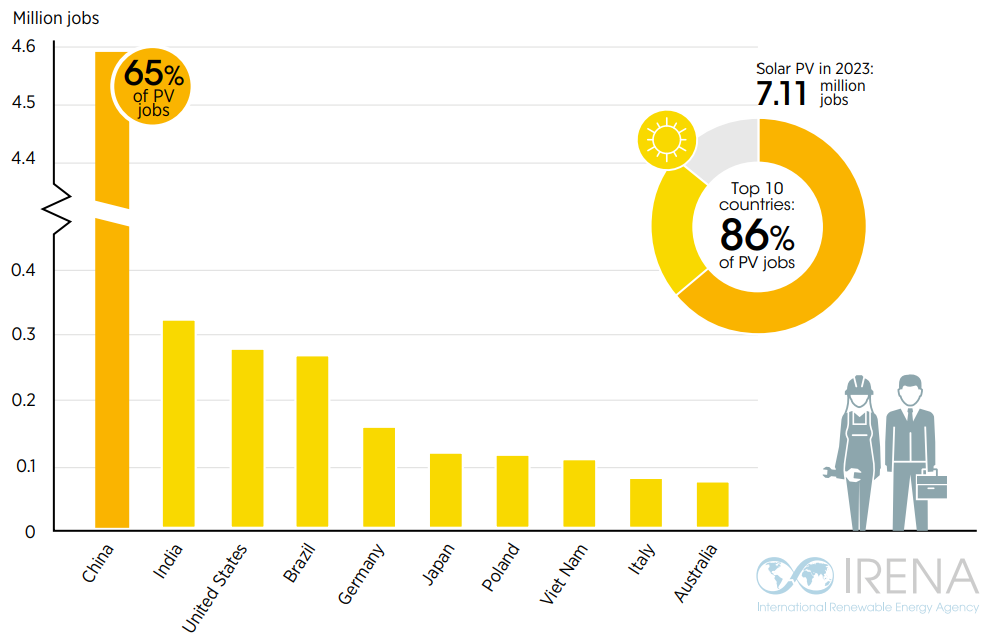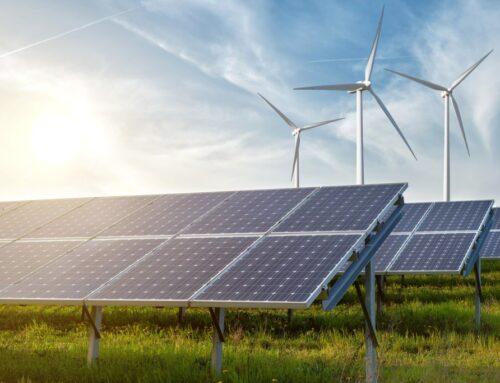IRENA: Solar PV represents 44% of renewables global workforce
October 2, 2024
China accounted for more than half of the solar PV jobs, with 4.6 million jobs, a 66% increase from the 2.76 million jobs in 2022. Its growth in renewables jobs was primarily driven by the country’s growth in solar PV additions last year and the ever-increasing capacity expansions on the manufacturing front. A capacity growth that is set to continue this year and reach 1.2TW of annual nameplate capacity across the value chain, doubling BloombergNEF’s forecast global installed capacity in 2024.
The split between manufacturing jobs and construction and installation, including operations and maintenance, in China is quite similar with 2.37 million and 2.22 million, respectively.

Four countries in the top ten where in Asia
In second place, and far away, was the European Union with 720,000 jobs, more than 80,000 fewer than what trade association SolarPower Europe (SPE) estimated in its ‘Solar Jobs Report’ that was published earlier this week. In 2023, Europe had exceeded 800,000 full-time equivalent jobs, according to data from SPE. Separating by country, India and the US rank second and third with the most workers, with 319,000 and 280,000, respectively. The US workforce in the solar industry rose by 5.9% in 2023, with over 15,500 more workers, according to a recent report from the Interstate Renewable Energy Council (IREC).
Overall, in the top ten countries with the most workers in the solar PV industry, four are Asian countries – China, India, Japan and Vietnam – three in Europe – Germany, Italy and Poland – two in America with the US and Brazil, and finally Australia.
Francesco La Camera, director-general at IRENA, said: “The story of the energy transition and its socio-economic gains should not be about one or two regions. If we are all to fulfil our collective pledge to triple renewable power capacity by 2030, the world must step up its game and support marginalised regions in addressing barriers impeding their transitions progress.
“Strengthened international collaboration can mobilise increased finance towards policy support and capacity building in countries that are yet to benefit from renewables job creation.”
Skilled workers challenge
One of the challenges highlighted in the report is the lack of skilled workers in certain areas of the renewable energy industry which could hinder the global transition. The fast pace of capacity additions from renewables is far greater than the development of a suitable skilled workforce. “A lack of skill anticipation and monitoring systems further hinders countries’ ability to identify skills gaps, analyse future training needs and adapt education and training programmes in line with market demands,” reads the report.
This goes in line with one of the policy recommendations from IRENA which suggests collecting more and better data that will allow countries to assess their needs and make “informed policy and investment decisions”.
Measures to develop skills need to be implemented in the planning stages of national transition frameworks, while encouraging companies and the industry to invest in upskilling and reskilling their workforce.
The full report can be accessed here.
Search
RECENT PRESS RELEASES
Related Post



